What Are the Best Mulches for Plants? 8 Great Options
-
Codee Chessher
- Last updated:
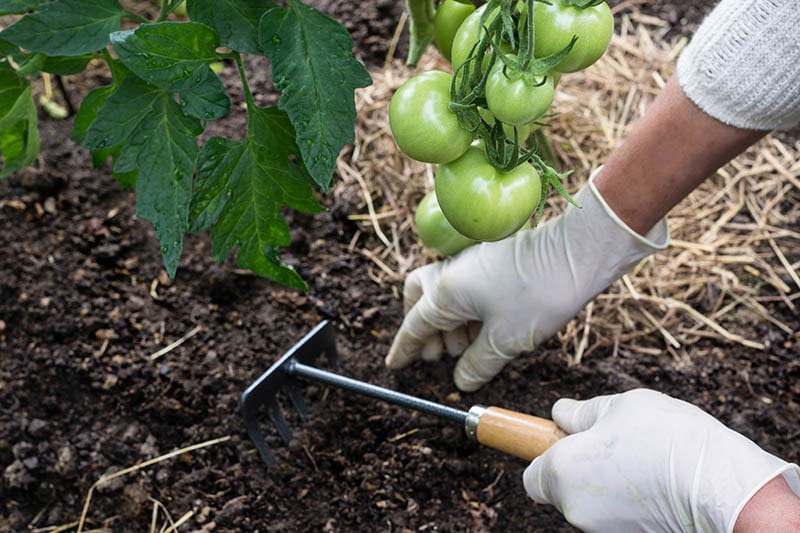
Mulch is a gardener’s best friend, serving several niches in the garden. It primarily acts as a barrier against troublesome weeds, but some mulch breaks down and leaves nutrients behind in the soil. This can be advantageous for vegetable gardeners who need to squeeze all the nutrients possible into their plants.
Let’s check out some of the best mulches you can use for your plants today and find out what they’re good for.
Organic vs. Inorganic Mulch
- Organic mulch is composed of material that used to be alive, like wood, leaves, and straw. Most of the time this means they leave behind nutrients in the soil when they eventually decompose. Lawn clippings need to be reapplied often, while bark chips and shredded bark will last months to years. Organic mulch is also known to improve soil drainage and texture, helping plants retain more moisture.
- Inorganic mulch is made of manmade materials that won’t degrade over time, like plastic or rubber. In some cases, these mulches are thought to release toxic chemicals into the soil in extreme heat, so use them at your own peril. Inorganic mulches are useful for when you need to suppress weeds for the garden but don’t want to spend a ton of time mulching.
The 8 Best Mulches for Plants
1. Lawn Clippings

Possibly the most abundant and free mulch you can use for your plants is grass clippings from mowing the lawn. They degrade quickly, but don’t just throw massive piles around your plants! Instead, add thin, even layers of clippings at an even pace as they rot.
Using too much will trap heat and actually harm your plants’ roots, so be careful! You can mix with shredded bark for a longer lasting mulch.
2. Straw
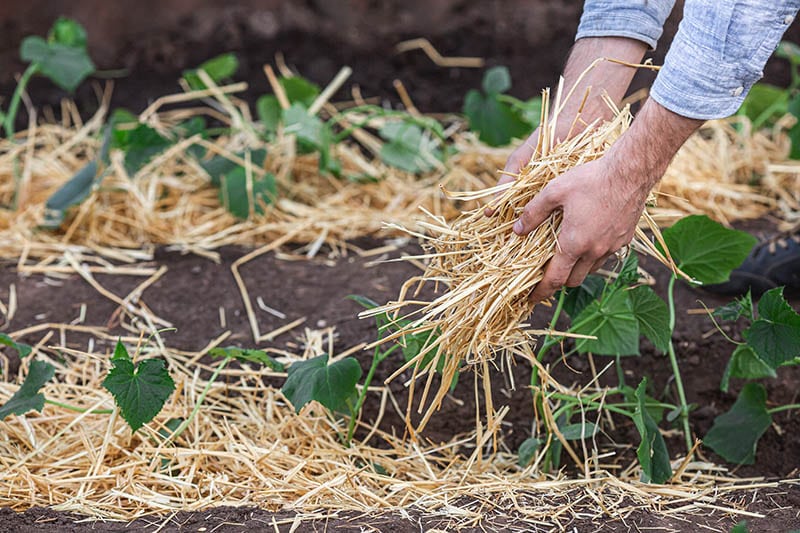
Straw is a classic mulch commonly used for rock gardens and cacti. It’s mainly useful for keeping plants warm in the winter, because straw has one huge flaw in the warm season: it comes with seeds.
Most straw comes with all types of common weed seeds, so you’ll have to pair straw with a pesticide or other weed-proof barrier. Straw and bark chips would make a good combo. Straw is also notorious for attracting rodents, so be careful!
3. Leaves
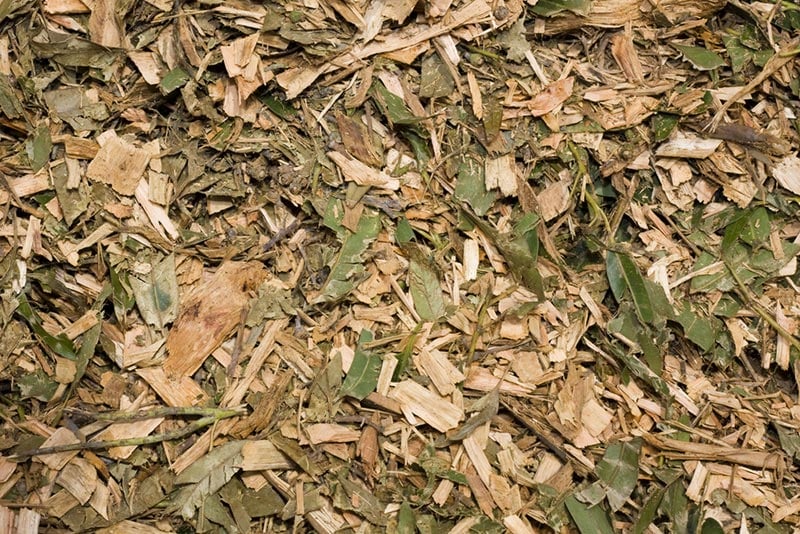
Brown or green leaves work, with green leaves adding nitrogen that’s used to supercharge plant foliage. As with lawn clippings, avoid layering leaves too thick or you risk creating heat pockets that can harm plant roots. Leaves are best used when mixed with lawn clippings or another organic mulch.
4. Plastic

Black plastic sheeting is an affordable mainstay of gardening, best used to keep soil warm and suppress weeds. Black plastic is also the mulch of choice for heat-loving plants like peppers, okra, and tomatoes.
The main issue with plastic is that it can’t survive alone, breaking down quickly in direct sunlight. Pair with a light mulch like pine needles or lawn clippings for best results. You must also poke lots of holes in the plastic so oxygen and nutrients can get into the soil.
5. Shredded Bark
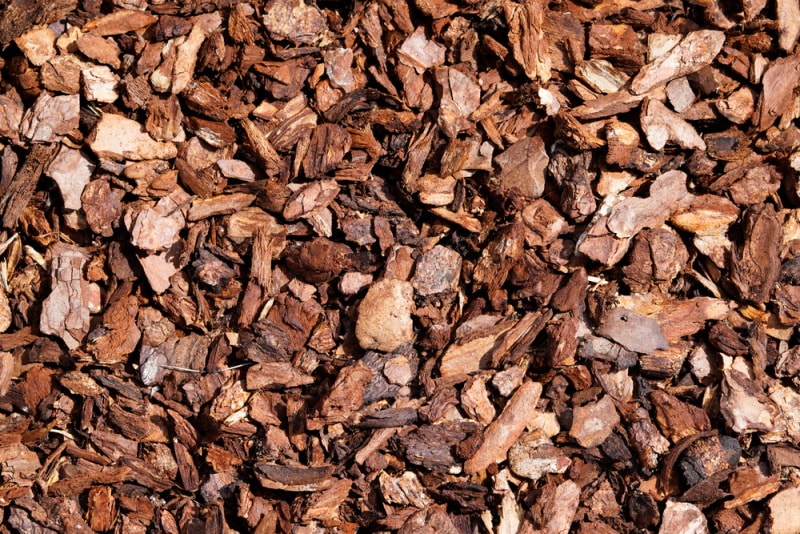
Shredded bark is an effective and long-lasting organic mulch that returns nutrients to the soil, but it has the unpleasant side effect of leaching nitrogen from the soil. Pair it with a nitrogen booster, like green leaves, for the best results, and avoid using sawdust. For longer lasting mulch that keeps away weeds, combine it with bark chips for extra coverage.
6. Bark Chips
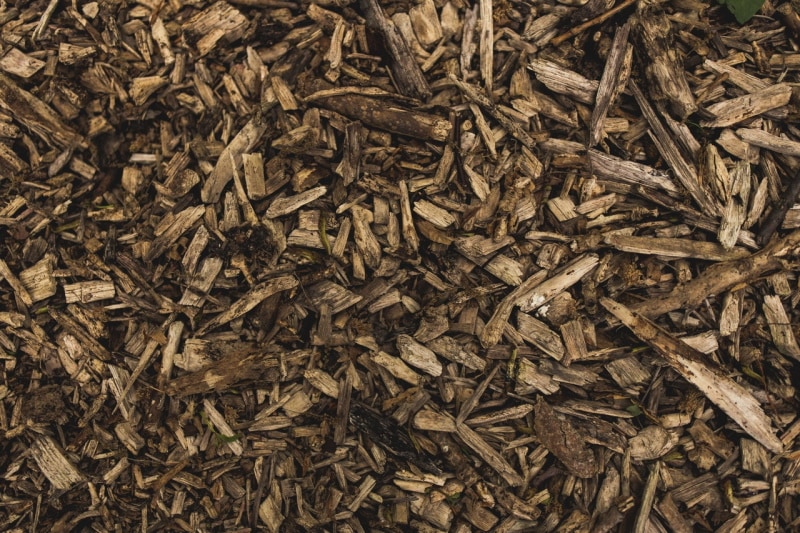
Bark chips are the organic mulch of choice when you want thick, long-lasting coverage around your plants. They take up to 3 years to fully degrade and will leech nitrogen while adding other nutrients to the soil. We’d suggest using a nitrogen-rich fertilizer or adding a nitrogen source like green leaves or compost.
7. Sawdust
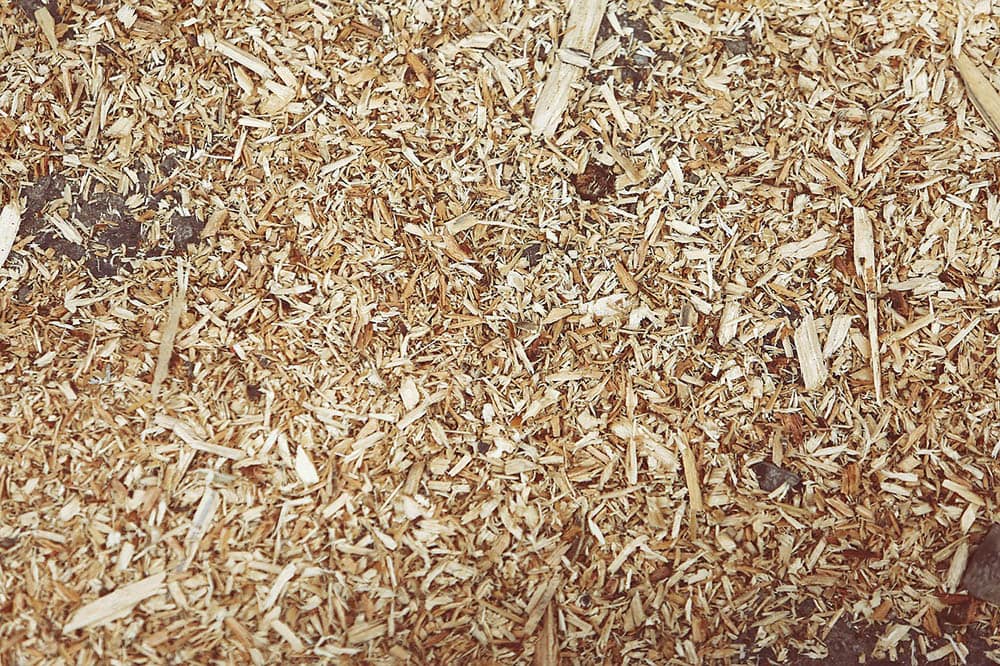
Sawdust isn’t the best mulch, blowing away easily in strong winds, but a lot of woodworkers have sawdust in abundant supply, and it can be used as filler for shredded bark, leaves, or lawn clippings. Be careful using sawdust with bark because it can pull too much nitrogen from the soil and cause yellowing leaves.
8. Compost
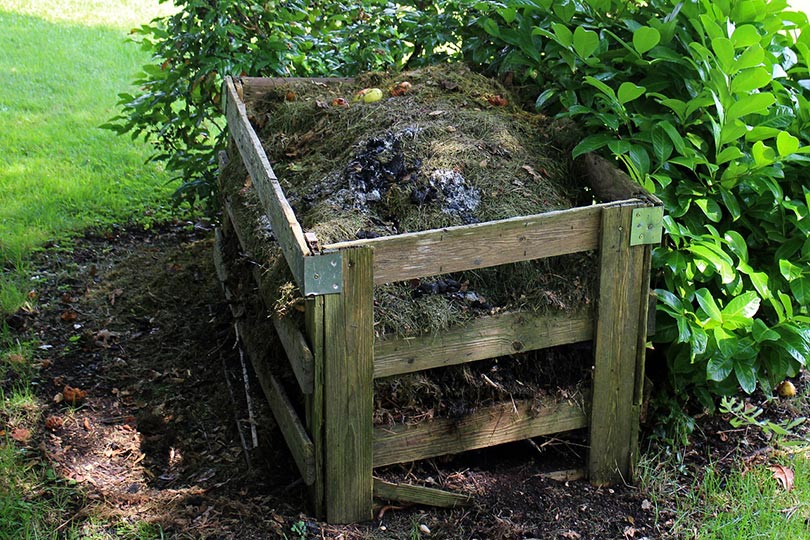
Compost is composed of partially rotted organic matter and looks like blackish soil. Compost is extremely nutrient-dense, making it an ideal fertilizer and mulch all in one package. Once decomposed, compost will improve soil structure and help plants retain moisture, too. Plus, it attracts worms and other soil life. Compost is one of the healthiest additions you can feed to any of your plants as a mulch.
In Conclusion
Plants will often grow fine without any mulch, but adding it can help keep roots warm, preserve moisture, and even add some invaluable nutrients into the soil. Compost is one of the best mulches to use, doubling as fertilizer, but lawn clippings are extremely easy to come by for nothing. Customize your mulch to reap multiple benefits at once!
Featured Image Credit: Jurga Jot, Shutterstock
Contents
